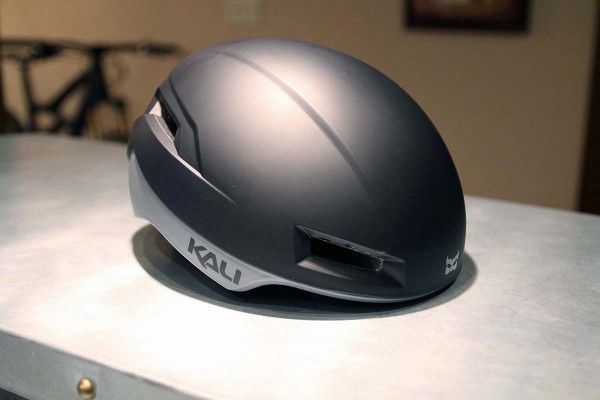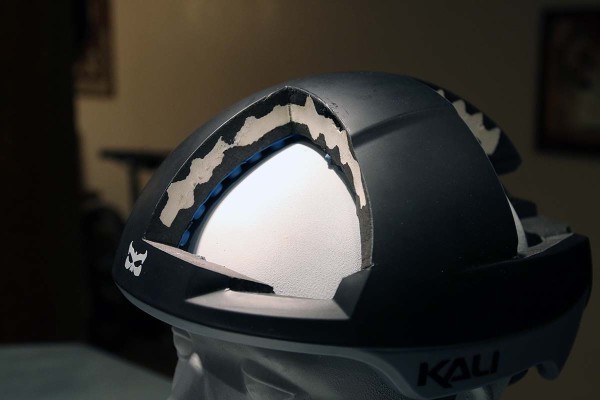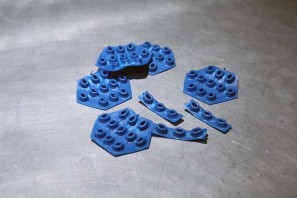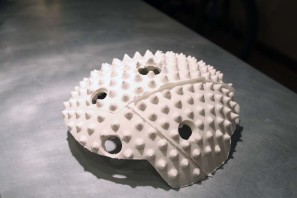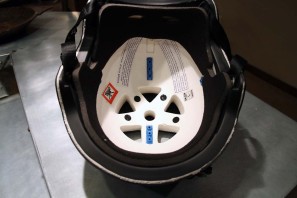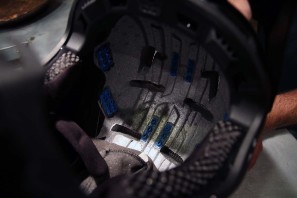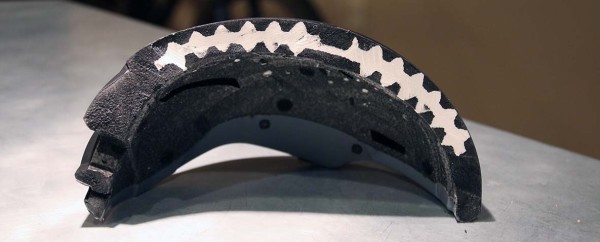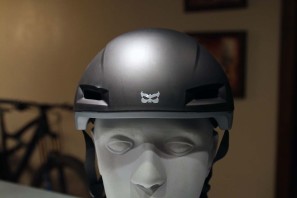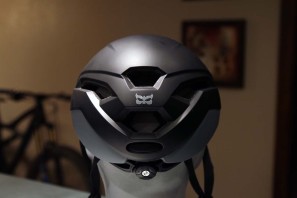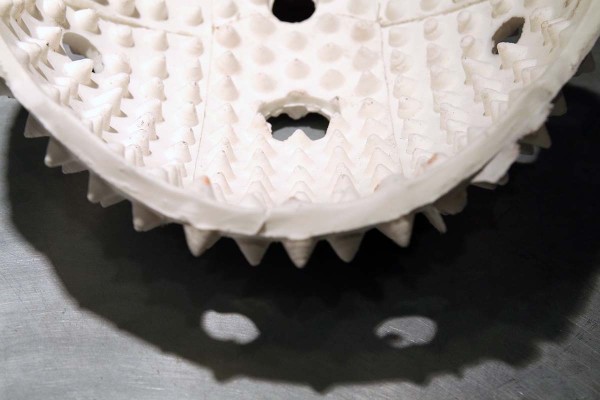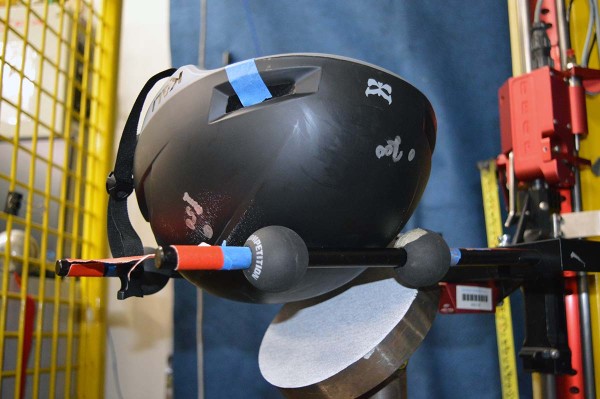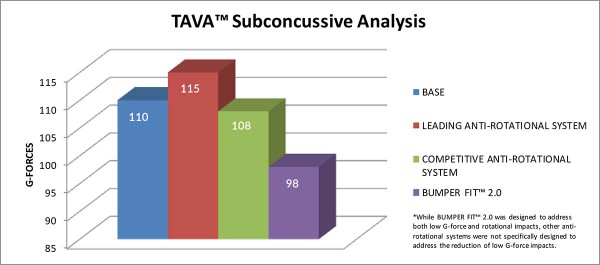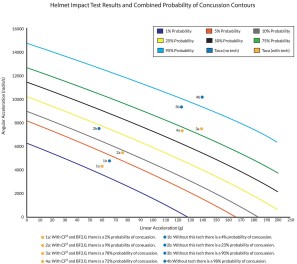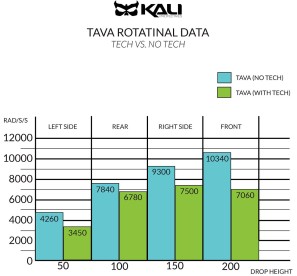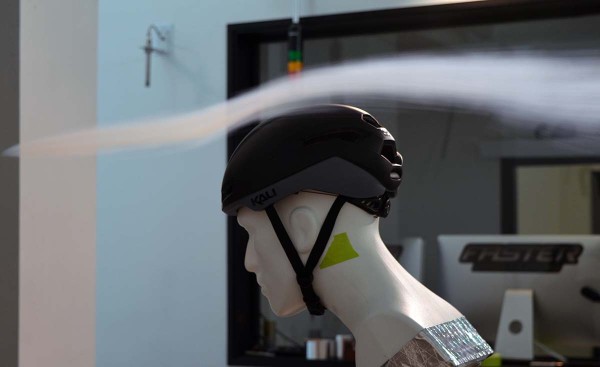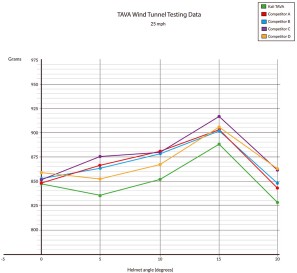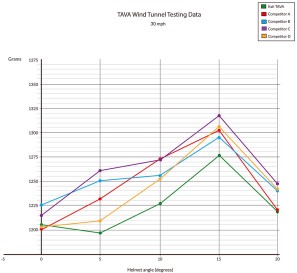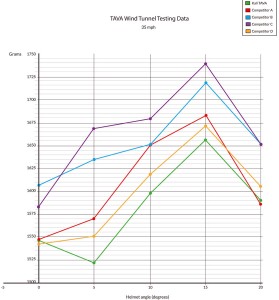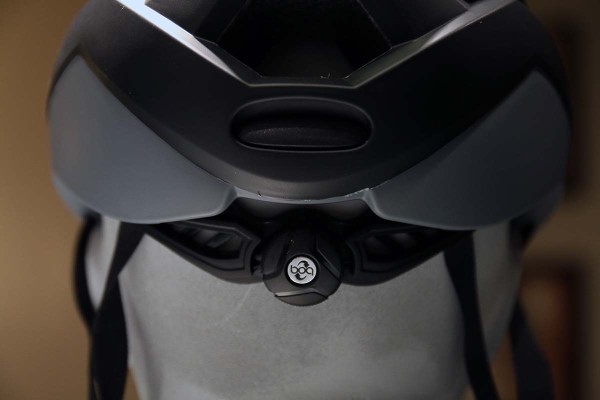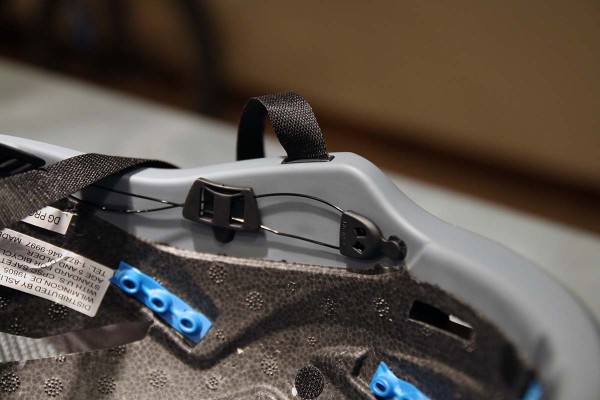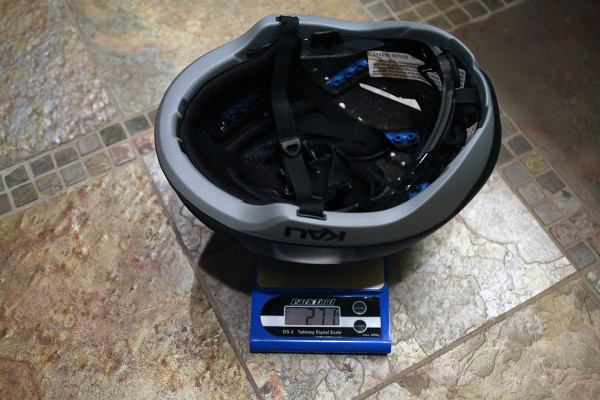To be honest, an aero road helmet wasn’t exactly what we were expecting to see here at Press Camp from Kali. As it happens, the new Tava was simply the next helmet in the pipeline for Kali which coincided with the launch of of their newest protection technologies.
In what could be considered their answer to MIPS, Kali has integrated two new materials into the construction that foreshadows what is to come in the future from the company. That, and as far as aero road helmets go, the Tava is very, very interesting…
If you’re thinking the Tava looks fairly small, that’s because it is. It’s tiny. And yet, the helmet is one of the most protective Kali lids to date thanks to the blue and white materials above. From the beginning, Kali’s mad scientist and owner Brad Waldron had always been looking for something that not only was a solution to reducing rotational impact forces to the brain, but low-g impacts as well. As they discovered in their testing at Dynamic Research in California, certain leading anti-rotational systems actually increased the impact to the head in low-g crashes.
After talking with the team behind Armorgel who specialize in viscoelastic polymer type materials, Brad eventually settled on a specific formula and shape that provided the properties he was looking for. Named Bumperfit 2.0, the design is the next generation of the original Bumperfit which was actually envisioned to reduce subconcussive forces but it turned out to improve the fit of the helmet as well. Bumperfit 2.0 also improves the fit but add a new level of protection as the ellipses compress, fold over, and essentially delay the rotation in an impact.
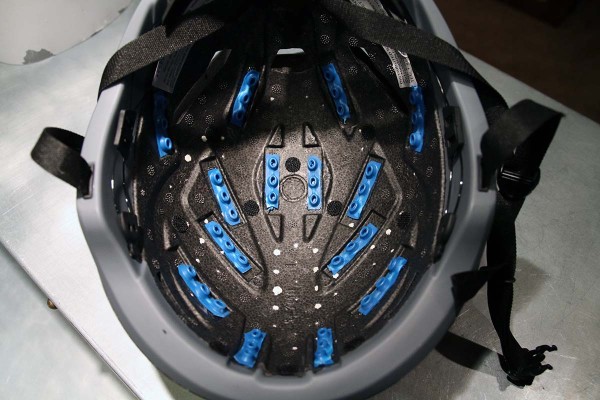
Just getting started with Bumperfit 2.0 on the Tava, Kali is already testing the technology on other helmets including the Viva Nano-Core (coming soon) and the next generation Shiva. These are a ways out, but Kali was happy to show that they plan on integrating it into their complete helmet line. However, Brad will be the first one to tell you – “if we find a better technology or product, we’re gonna change.” Brad has always easily excited when discussing new developments in safety, but it’s clear that he is very excited about Bumperfit 2.0.
The other big news for the inside of the Tava is the first inclusion of Kali’s Nano-core Composite Fusion² foam construction. Working with chemists out of Italy, the formula of the Nano-core is so secretive that Brad doesn’t even know one of the ingredients other than it is a nano material mixed with an acrylic fiber. The result is an extremely light and extremely resilient material that can withstand multiple impacts (the material, not the helmet) and can be sandwiched between two layers of EPS foam. Using an opposing Conehead design, the combination allows the shell of the helmet to be much smaller without sacrificing impact protection. The result is a helmet that is much more aerodynamic thanks to the reduced volume and truncated tail.
Since a bit part of Bumperfit 2.0 is reducing Subconcussive forces, Kali had to devise their own testing though Dynamic Research in order to test it. While most drop tests are from a height of 200cm, the low speed drop test started from 100cm simulating a crash around 10 mph. The helmet was then dropped on a 60 degree slab that replicates a crash at 30 degrees and the impact was measured by a number of accelerometers along the helmet. Most EPS foam compresses around 100-120g which is why additional material to absorb subconcussive forces is important. While the Tava tested better than the leading and competitive anti-rotational systems, the real truth is in the test where they used the exact same helmet (lower right graph). One Tava had Bumperfit 2.0, the other did not. In every situation the Bumperfit 2.0 helmet tested better, and the testing directly corresponded to the amount of Bumperfit material on different portions of the helmet.
The graph on the lower left show the probability of sustaining a concussion with and without Bumperfit 2.0 as formulated by an independent lab. In some instances the helmet could possibly reduce concussion potential by more than 20%. Brad makes it clear – nothing is guaranteed since almost every crash is different, but if they can do anything to reduce the risk, it’s a win in their book.
Even if the helmet wasn’t so impressive in the impact protection department, it would still be notable for its aerodynamics. After the design was complete, Kali took the helmet to Faster wind tunnel in Scottsdale, AZ to test the Tava against leading aero helmets on a mannequin. From straight on, the Tava isn’t the best. However, the helmet is consistently one of the fastest at varying yaw angles and at almost all speeds. Saving 50g of drag would be the equivalent of half a second per kilometer which for a pro racer could make a noticeable difference. Kali does admit that the first priority was aerodynamics so the venting won’t be like your typical airy road helmet, but should be on par with other aero road helmets.
Last but not least, Kali is also introducing a new Boa dial based fit system that works very well.
On the scale our S/M sample which Brad claims is production ready and fully certified, came in at 271g. With production ready to start immediately, Kali expects the S/M size to be ready by fall, followed by the L/XL by next Spring. Retail price is set for $250.
